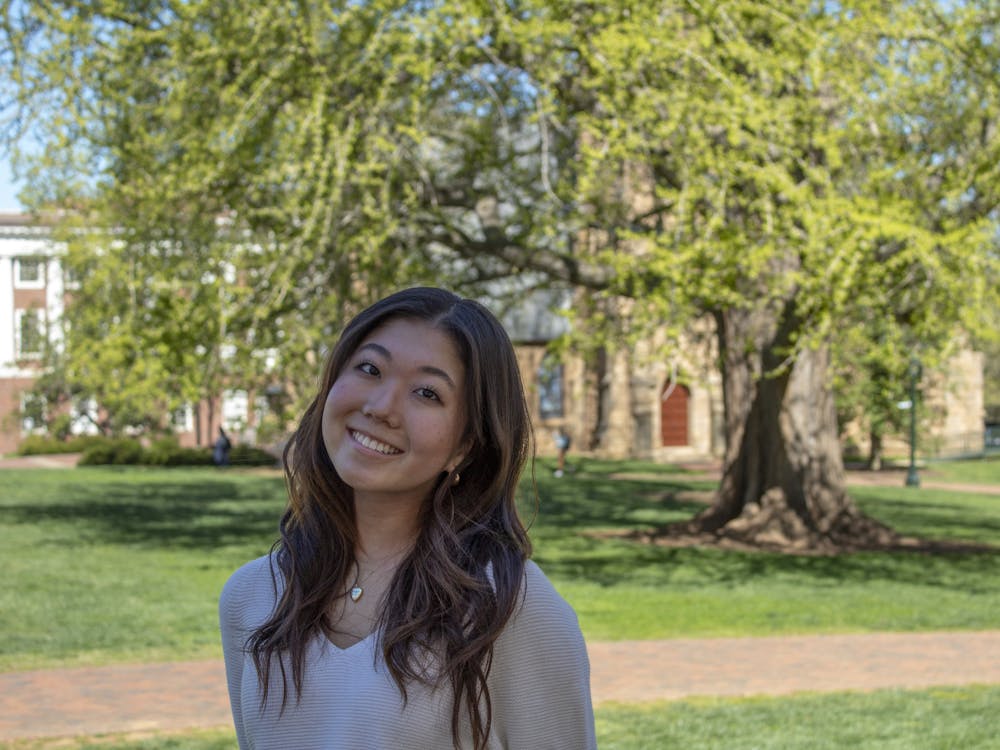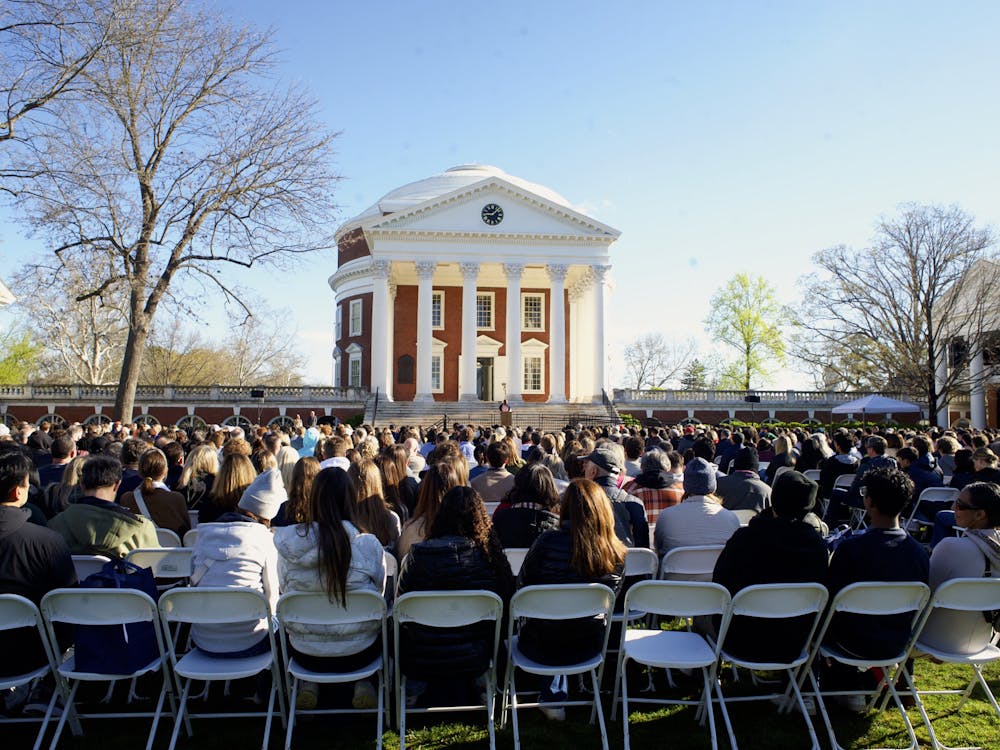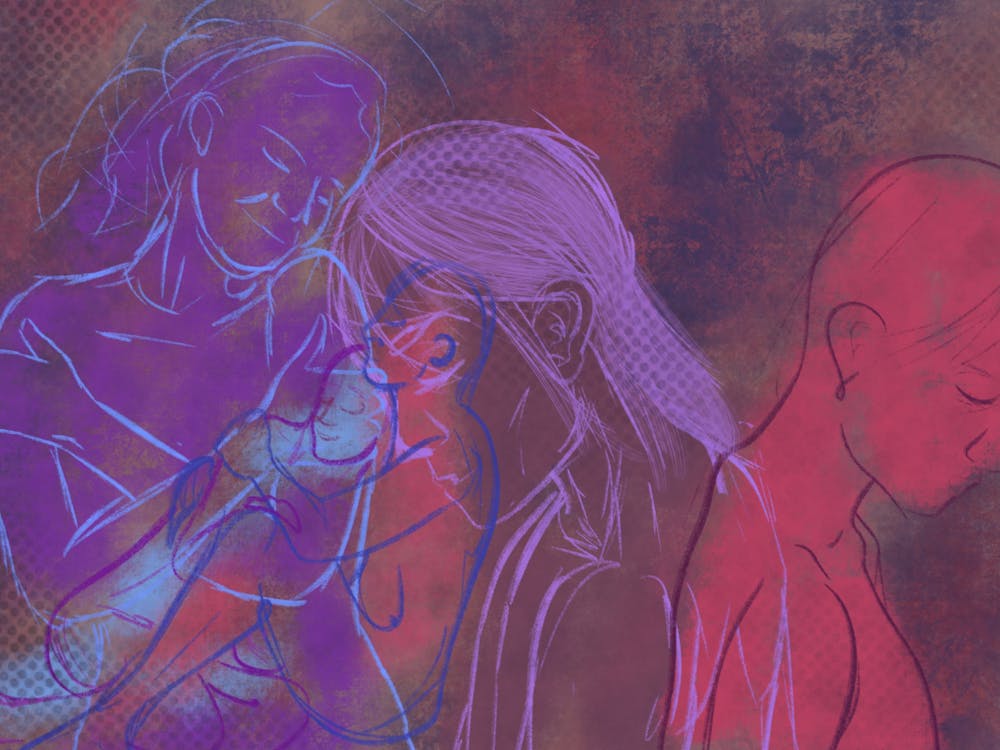He sits on the south end of the Lawn and overlooks students on their trek to class. With a chalked advertisement for the University Transit Service streaked across his marble and granite base and occasional use as a Frisbee golf target, he is best known for his role in the streaking tradition.
He is Homer. And he deserves some respect.
"I don't know if the statue has ever been restored or cleaned," said Ellen Daugherty, a Ph.D. candidate in the art department who wrote a distinguished thesis on public statues. "I feel strongly about the fact that these things are not being taken care of, especially by the student population."
Homer the statue found his home on the Lawn almost 100 years ago, but the question remains as to whether Homer the classic Greek poet and author of the epics, the "Odyssey" and the "Iliad," actually existed.
Critics who have raised the Homeric Question point to vast vocabulary differences between the two epics, suggesting they actually were written by several authors under one name.
Classics Prof. John Dillery said he is middle of the road on the Homeric Question; he thinks a single literary genius pulled together the epics which before had existed only in oral tradition.
"I think that a single mind produced both works, at least in the sense of giving the epics a new direction and a new twist," Dillery said.
The debate over whether Homer existed in ancient Greece extends to the University Grounds. Archeologists question if the statue we revere as Homer is really Homer, former Rotunda Administrator Evelyn Turnbull said.
Turnbull said one time an archeologist came into her office to try to explain that the famous Lawn statue was not really Homer. He claimed Homer never would have worn a cap such as the beanie on the statue's head; he also explained that the lyre in the statue's hands came from a different time period than Homer's. And the key factor that tipped him off to the statue's possible misidentification -- he's circumcised.
"The man thought the statue was more likely Saul and David. He found too many features of the statue that were from the wrong period for it to be Homer," Turnbull said.
Archeologically incorrect as it may be, art student Daugherty still said she believes the statue is meant to be Homer.
Sculpted by Sir Moses Ezekial, the statue was commissioned originally for J.W. Simpson, a wealthy New York lawyer who bought it for Amherst College, his alma mater. For an unknown reason, Amherst rejected his gift, but Thomas Nelson Page, a prominent member of the University's Alumni Association, stepped in.
Page had been in Rome and visited Ezekial's sculpture studio among the Baths of Diocletian, ruins that had been converted into apartments. During this period, it was not unusual for artist's studios to be tourist attractions, and Page wasted no time in contacting then-University President Edwin Alderman about Ezekial's work.
Ezekial, a native Virginian who moved to Rome after the Civil War, came to Grounds to scout out a place for his work. He thought the steps of the Rotunda would be a good space, but he settled for the South Lawn. Cabell Hall, Cocke Hall and Rouss Hall just were being completed when the University acquired the statue, and the area seemed appropriate for Homer as he would not impede on the original Lawn Jefferson had crafted.
The sculptor was born in Richmond, served as a cadet at the Virginia Military Institution and fought for the Confederates in the Battle of New Market.
Knighted by the King of Italy, Ezekial now rests in Arlington National Cemetery near his own piece: the Confederate Soldiers' Memorial. Daugherty said Ezekial claimed there would be no better place for his statue than at the premier university from his home state of Virginia.
Simpson, the purchaser, seemed to agree. In a letter found in the Alderman Papers written June 6, 1906, he wrote to the president, "I am delighted with the spirit with which you accept the Homer group of Moses Ezekiel. My own college having no suitable place for it, the University of Virginia seemed to me its natural home."
At this time a whole series of ideas of ways to clutter the Lawn with objects emerged. A Corks and Curls volume from the period even contains a proposal to put a triumphal arch at one end.
Although that plan never materialized, the University did acquire five major public statues within years of each other. Those statues were Homer, the Ezekial Jefferson in front of the Rotunda, the two statues on the axes of the Lawn (Jefferson and Washington) and the Aviator in front of Clemons Library.
In the bronze Lawn statue, Homer huddles behind a guide, testimony to the theory he was blind. Once the idea of a single Homer was established, people looked closer at his work and claimed he had placed himself in his poetry. It has been suggested that the blind bard, Demodicus, was Homer, self-portrayed.
Homer was a bard, meaning he would perform poems orally before an audience. His epics, which tallied 12,000 lines each, would have taken almost all day to read; he probably performed separate sections on different evenings.
"Homer was for the Greeks, and to a lesser extent for the Romans, a man who collected a culture of words," Dillery said. "Thomas Jefferson was profoundly influenced by the ancient world. So to have, in a sense, the founder of Greek literature on this campus fits perfectly"




